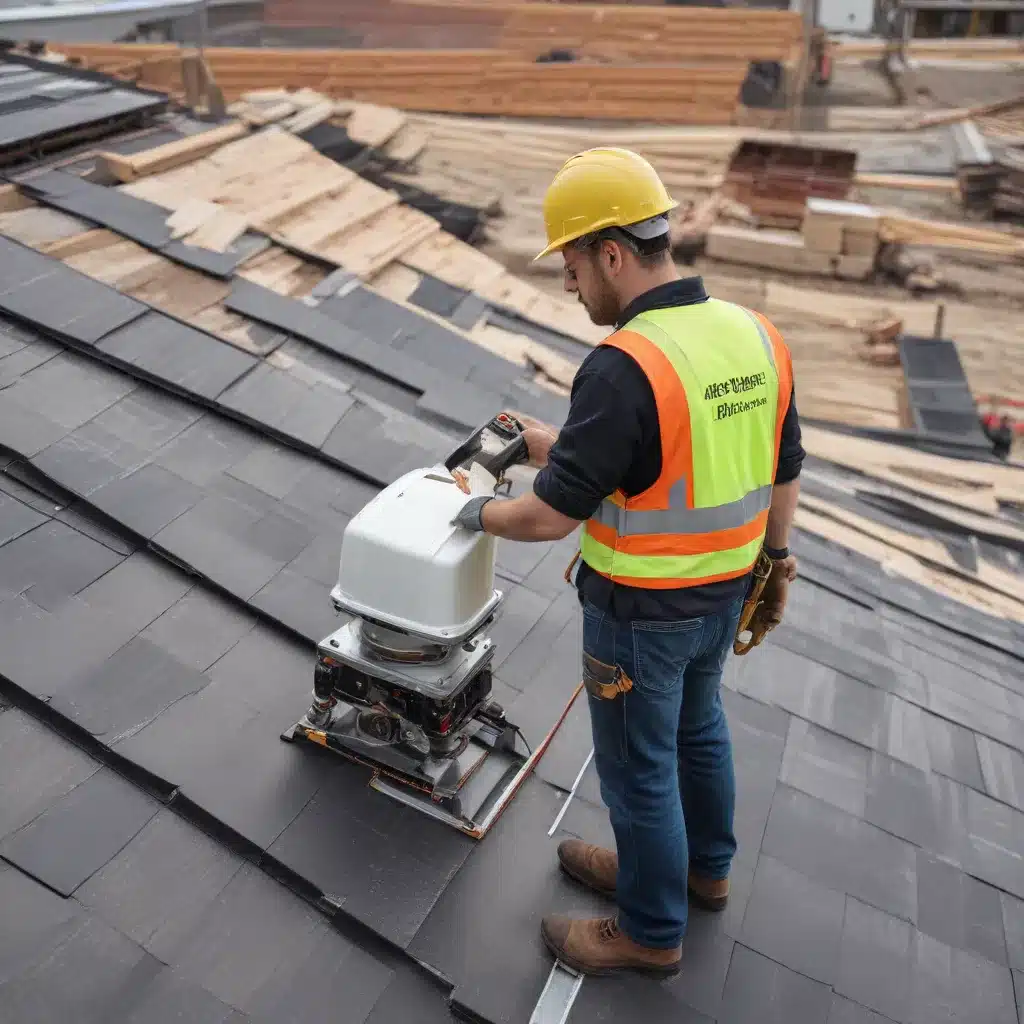
The Construction Industry’s Robotics Revolution
The construction industry is undergoing a remarkable transformation, with the rapid adoption of robotics and automation technologies. These advancements are reshaping the way buildings and infrastructure are designed, constructed, and maintained. From enhancing productivity and safety to improving sustainability and cost-effectiveness, the integration of robotics is revolutionizing the construction landscape.
Addressing Industry Challenges with Robotics
The construction industry has long grappled with a myriad of challenges, including labor shortages, safety concerns, and the need for more efficient and environmentally-friendly building practices. Robotics and automation offer viable solutions to tackle these pressing issues.
Labor Shortages and Skills Gaps: The construction industry is facing a significant skills crisis, with 91% of businesses predicting a labor shortage by 2030. Robotic automation can help bridge this gap by taking on the repetitive, physically demanding, and dangerous tasks, allowing human workers to focus on more complex and strategic aspects of construction projects.
Safety Improvements: Construction workers are up to four times more likely to be involved in a fatal accident compared to other industries, with an estimated 108,000 fatalities worldwide every year. Robots can handle hazardous tasks, such as working in confined spaces or operating heavy equipment, reducing the risk of injuries and improving overall site safety.
Sustainability and Environmental Impact: The construction industry is under increasing pressure to reduce its environmental footprint. Robotic systems can optimize resource usage, minimize waste, and enable more efficient building processes, contributing to more sustainable construction practices.
Transformative Robotic Applications in Construction
The integration of robotics in construction is not limited to a single application but rather a diverse array of innovative solutions that are reshaping the industry. Let’s explore some of the key areas where robotics are making a significant impact:
Automated Prefabrication and Assembly
Robotic systems are revolutionizing the prefabrication and off-site assembly of building components. Industrial Robots can automate the fabrication of timber roof supports, the installation of elevators, and the production of prefabricated modular homes, improving efficiency, quality, and speed.
Robotic Bricklaying and Concrete Printing
Robotic Bricklayers and Concrete Printing Robots are automating the construction of walls, floors, and other concrete structures. These technologies can lay bricks, apply mortar, and shape concrete with precision, significantly increasing construction speed and reducing manual labor.
Autonomous Excavation and Earthwork
Autonomous Excavators and Automated Dozing Robots leverage advanced sensors and machine learning algorithms to perform excavation and earthwork tasks with high precision, even in complex terrains, enhancing productivity and safety.
Robotic Welding and Material Handling
Robotic Welding Systems automate the welding process in metalwork, ensuring consistent and high-quality welds, while Automated Guided Vehicles (AGVs) and Robotic Arms handle material transportation and positioning, streamlining on-site logistics.
Aerial and Ground-Based Inspection Robots
Inspection Drones and Robotic Crawlers equipped with cameras and sensors enable efficient and detailed inspections of construction sites, structures, and hard-to-reach areas, improving site monitoring and asset management.
Autonomous Paving and Pipe Installation
Autonomous Pavers and Pipe Inspection and Installation Robots automate the laying of asphalt or concrete and the installation and maintenance of piping systems, respectively, ensuring consistent quality and reducing human labor.
Robotic Painting and Ductwork Fabrication
Robotic Painting Systems and Robotic Ductwork Fabrication automate the application of coatings and the fabrication of HVAC components, enhancing efficiency, consistency, and safety.
Construction 3D Printing
Construction 3D Printers leverage robotic arms to extrude building materials, such as concrete, enabling the rapid construction of structures layer by layer, reducing waste and labor costs.
Collaborative Robots and Wearable Assistive Devices
Robotic Exoskeletons and Collaborative Robots are designed to work alongside human workers, enhancing their capabilities, reducing physical strain, and fostering a safer and more productive work environment.
Driving Efficiency, Safety, and Sustainability
The integration of robotics in construction is not only transforming the industry but also delivering tangible benefits that address its most pressing challenges. By automating repetitive and hazardous tasks, robotic systems are improving productivity, efficiency, and safety. Additionally, these technologies are contributing to more sustainable construction practices by optimizing resource usage, reducing waste, and minimizing the environmental impact of construction projects.
The Future of Robotics in Construction
As the construction industry continues to evolve, the role of robotics and automation is poised to expand further. Ongoing research and development efforts are focused on advancing autonomous robotic systems, enhancing human-robot collaboration, and integrating digital technologies like Building Information Modeling (BIM) and the Internet of Things (IoT) to create a more connected and intelligent construction ecosystem.
By embracing the power of robotics, the construction industry is unlocking new possibilities for innovation, efficiency, and sustainability. As we look to the future, the seamless integration of human expertise and robotic capabilities will pave the way for a construction landscape that is safer, more productive, and environmentally responsible.
Conclusion
The construction industry’s adoption of robotics and automation is a transformative journey that is redefining the way buildings and infrastructure are constructed. By addressing critical challenges, enhancing safety, improving productivity, and promoting sustainability, these advancements are shaping a future where construction projects are executed with precision, efficiency, and a commitment to environmental stewardship.
As a seasoned roofing professional, I am excited to witness the continued evolution of robotics in construction and the positive impact it will have on the industry and the communities it serves. By staying informed and embracing these technological advancements, roofing professionals can position themselves at the forefront of this revolution, delivering exceptional services and contributing to the creation of a built environment that is safer, more efficient, and environmentally responsible.
To learn more about the latest developments in roofing automation and robotics, I encourage you to visit the Roofers in Northampton website, which serves as a valuable resource for industry professionals and homeowners alike.

